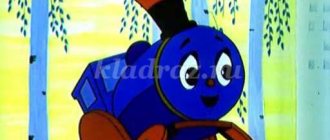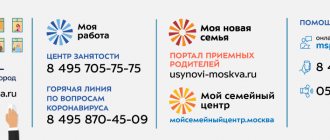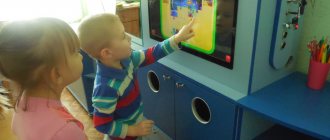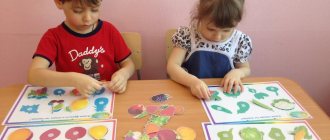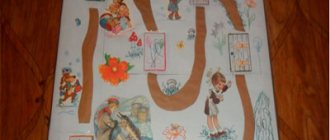Material for designing speech therapy notebooks
Material for designing speech therapy notebooks
Speech therapy notebooks must be designed in such a way that parents understand them. Usually in a notebook I write which sounds are broken and what I am doing with them now: stage, automate or differentiate; work schedule and rules for using the speech therapy notebook.
- Work schedule and how to use the speech therapy notebook.
The work schedule is glued to the flyleaf so that it is easier for parents to navigate when they can approach the speech therapist.
Also, paste into a notebook or put in a folder a sheet: “How to use a speech therapy notebook,” where the following rules are written:
How to use a speech therapy notebook?
- The notebook must be brought to each speech therapy session.
- Homework is posted on Thursday-Friday.
- All homework is completed for 15-20 minutes a day. Don't try to complete all tasks in one day; divide them over several days.
- All tasks that are pasted into the notebook must begin with articulatory gymnastics.
- Assignments must be completed every day. If they haven’t written anything to you today, you need to repeat what was asked before.
- Don't do your child's homework, do it with him.
- Teach your child to treat the notebook with care: do not wrinkle it, do not bend the pages.
- Disturbed sounds and articulatory gymnastics.
A sign with broken sounds will answer parents’ questions about what you are assigning to your child, and will also remind you at each lesson what has been assigned and what needs to be assigned to the child in the future (so as not to look at the sound pronunciation screen).
Last name child's first name
| Sh | AND | H | SCH | L | L' |
A circle is placed in the bottom cells indicating what we are doing with the sound at this time.
⃝ — sound setting
⃝ — sound automation
⃝ - sound differentiation
Articulation gymnastics are also included for parents, with a precise explanation of each exercise.
Articulation gymnastics
Do this before every homework assignment.
| Smile | Stretch your lips into a smile. Lips closed, teeth closed | Hold this position for a count of 10. |
| Fence | Smile widely, show clenched teeth (teeth in correct bite) | Hold this position for a count of 10. |
| tube | Pull your lips forward (teeth clenched) | Hold this position for a count of 10. |
| Tube - fence | Alternate exercises “Tube” and “Fence” | Alternate 5 times – “tube”, 5 times – “fence” |
| Let's punish the naughty tongue | Slap the wide flat tip of the tongue with your lips, pronounce “five-five-five” | Repeat 10 times |
| Spatula | Place the wide, flat tip of your tongue on your lower lip, saying “five” once. The tongue should not move. The mouth is slightly open. | Hold this position for a count of 10. Repeat 2-3 times. |
| Needle | Make a narrow tip of your tongue and explain to the child as if you want to reach the table. The tongue should not move. The mouth is slightly open. | Hold this position for a count of 10. Repeat 2-3 times. |
| Spatula - needle | We alternate the “spatula” exercise and the “needle” exercise | Alternate: 5 times – spatula, 5 times – needle |
| Brushing our teeth | Open your mouth wide, smile, show your teeth. Then use the tip of your tongue to “brush your teeth” from the inside, moving it right and left (first the lower teeth, then the upper ones). The lips smile all the time, the lower jaw does not move. | Repeat 5-6 movements in each direction |
| Chocolate | Open your mouth slightly and lick your lips with your tongue in a circle clockwise and counterclockwise. | Repeat 4-5 times in each direction. |
| Watch | Open your mouth slightly, stick out your tongue and move it left and right from one corner of your mouth to the other. | Repeat 5-6 movements in each direction. |
| Swing | Open your mouth wide, stick out your tongue and move it from the upper teeth to the lower teeth. The lower jaw does not move, the teeth do not bite the tongue. | Repeat 5-6 movements in each direction. |
| sore finger | Place the wide, flat tip of your tongue between your lips (that is, your lips lightly hold the tip of your tongue) and blow on your finger. The air should flow down the middle of the tongue through the small gap between the tongue and the upper lip. Take a deep breath and long, smooth exhale. The cheeks do not puff out. | Repeat 2-3 times |
| Blow out the candle! | The position of the tongue and lips is as in the previous exercise. Blow sharply on 2 fingers (“candle”). Take 1 deep breath and 2-3 sharp strong exhalations. The cheeks do not puff out. | Repeat 2-3 times. |
| Slide | Open your mouth wide, smile, show your teeth. Place the tip of your tongue against your lower teeth. The back of the tongue rises up. The tongue is firm and does not “fall out” behind the teeth. | Hold in this position for a count of 10. Repeat 2-3 times. |
| Delicious jam | Using the wide, flat tip of your tongue, lick your upper lip from top to bottom. In this case, the lower teeth should be visible (the teeth do not bite the tongue). | Repeat 3-5 times |
| horse | Open your mouth slightly, smile, showing your teeth. Click your tongue. Try not to move your lower jaw. | Repeat 10 times |
| Fungus | Suck your tongue to the roof of your mouth (as in the “Horse” exercise before clicking) | Hold for a count of 10. Repeat 2-3 times. |
| Harmonic | Do the “Mushroom” exercise. Move your lower jaw up and down. | Repeat 5-6 times. |
| Sweetie | Place the tip of your tongue against your cheek (lips closed and teeth apart). Then rest on the other cheek. | Repeat 2-4 times with the left and right cheek. |
All these reminders are pasted into the notebooks for parents, only after that the homework assignments are pasted directly into the notebooks.
Child's individual notebook
An individual notebook (diary) is issued for each child in the speech therapy group. Tasks are written in it to consolidate the knowledge, skills and abilities acquired in the classroom. Considering that the child is studying under the guidance of teachers and parents, the speech therapist in this notebook gives methodological recommendations for completing the proposed tasks.
Currently, a large number of printed workbooks have appeared for individual work with children with speech disorders [3]. The speech therapist has the right to make a choice: either he, together with the parents and the child, brightly and colorfully designs an individual notebook, or uses a printed publication, making adjustments to it taking into account the individual characteristics of the child and the dynamics of his development. If the speech therapist prefers ready-made printed publications, then the individual notebooks are accompanied by a notebook for communication with parents, where the date, task numbers, pages, and additional types of work with the child are recorded.
At the end of the week, individual notebooks are given to parents for home study on weekends. On weekdays, the teacher and speech therapist work with the child using notebooks.
Notebook for children's attendance at speech therapy classes
To record children's attendance at speech therapy classes, a special notebook is created. On the left side of the second page there is a list of children in the speech therapy group. On the rest of the second and third pages, the month and date are indicated at the top and the “Note” column is highlighted, in which the speech therapist indicates the number of classes the child missed in each month and makes other notes. The notebook must be filled out before classes begin. The letter “n” indicates the absence of a child in a preschool educational institution.
The accounting notebook also allows you to coordinate individual work, namely: regulate the number of lessons per week with each child (the speech therapist uses the “+” sign daily to determine a group of children for individual work), alternate the days and times of individual lessons so that there are no problems in mastering general education programs, analyze the organizational aspect of individual lessons for any period of study in order to increase the effectiveness of logo-correction work.
Notebook of working contacts between speech therapist and teacher
The speech therapist and teacher solve many problems related to the correction of speech activity together: the formation of phonetic-phonetic processes, the lexical-grammatical structure of speech and coherent statements, the development of the communicative function of speech, higher mental processes, etc. The leading role in the organization of correctional and pedagogical work belongs to the speech therapist. It develops correct speech skills in children, and the teacher reinforces them. Practice shows that the effectiveness of overcoming speech disorders in preschoolers largely depends on how productively, skillfully and competently the teacher includes the trained speech material in the situation of natural communication of children and systematically controls the sounds in the child’s speech.
In the afternoon, the teacher conducts special individual lessons with children, the content of which is determined by the speech therapist. Tasks are written down in the work contact notebook of the speech therapist and teacher[4] individually for each child, subgroup (from 3 to 6 people) or the entire group. Evening classes include articulation and finger exercises; pronouncing words, phrases, poems, texts previously worked out by a speech therapist for the purpose of automation, differentiation of delivered sounds; games, tasks on the formation of phonemic processes, lexical and grammatical components of the language; examining specially selected subject and plot pictures and composing stories based on them; various types of exercises to develop attention, memory, and thinking. All types of tasks should be familiar to children and explained in detail to the teacher.
An approximate form of keeping a notebook of working contacts between a speech therapist and educator[5]
| date | Last name, first name of the child | The content of the work | Relationship with parents | results | |||||
| Phonemic processes | Sound pronunciation | Lexicon | Grammatical categories | Offer | Connected speech | Development of the psychological basis of speech | |||
| 20.10 | Ivanov Sasha (FFN) | Automation of sound [s] in phrases (p. 15—21*) | And fa “What has changed?” (based on the topic “Mushrooms”) Card No. 2 | ||||||
| 20.10 | Petrov Andrey (ONR) | A set of articulation exercises for sound [iuj (p. 3-10) | Enrichment of vocabulary on the topic “Mushrooms”. Card no. 2 | Use of possessive pronouns (my, my, my). Card No. 10 | Invite parents for a conversation at 21.10 | ||||
| 20.10 | Working with the whole group | Analysis of sound series (a-u, a-u-i, etc.) | Drawing up proposals for the plot painting “Autumn in the Forest” | ||||||
Plan of interaction between a speech therapist and participants in the correctional pedagogical process
The success of joint correctional and pedagogical work with children with severe speech impairments largely depends on the properly organized interaction of a speech therapist, educators, psychologist, music director, physical education instructor and visual arts specialist, medical workers, social educator and parents. Each of them, solving their own problems defined by educational programs and regulations on preschool educational institutions, must take part in the formation and consolidation of correct speech skills in children, the development of the sensorimotor sphere, higher mental processes and health promotion.
The speech therapist organizes the interaction of specialists in the correctional and pedagogical process of the preschool educational institution. He plans and coordinates psychological and pedagogical support for children with severe speech impairments.
The rational organization of joint activities helps to correctly use personnel potential, working time, determine the main directions of correctional and developmental work and skillfully implement personality-oriented forms of communication with children.
Plans for joint activities of pre-school specialists
| Events | Term | Responsible | Note | |
| Organizational events | ||||
| Comprehensive psychological, medical and pedagogical examination of preschool children at the PMPK | May | Head of preschool educational institution, speech therapist, medical workers | ||
| Staffing speech therapy groups taking into account the recommendations of the IIMPC | May June | Head of preschool educational institution, speech therapist, psychologist | ||
| Questioning parents to obtain information about the early psychophysical development of children and identify requests and wishes | September | Speech therapist, head nurse | ||
| Discussion and approval of the annual plan for joint work of participants in the correctional pedagogical process to overcome speech disorders and improve the cognitive sphere in children | September | Speech therapist, teachers | ||
| Exhibition of books, teaching aids, didactic games used in correctional pedagogical work | January | Specialists, speech therapist, psychologist | ||
| Design of stands and folders for parents with recommendations from relevant specialists | Monthly | Speech therapist, specialists | ||
| Formation of information readiness among teachers and parents for correctional work with children with speech problems | ||||
| Features of speech and psychophysical development of children with speech disorders (seminar) | December | Speech therapist, psychologist, physical education instructor, head nurse | ||
| Specifics of the work of educators and specialists with children in speech therapy groups (workshop seminar) | November | Speech therapist | ||
| Consultative and informational assistance to educators, specialists, parents: - organization of individual lessons with the child; — methodology for performing articulation gymnastics; — a person-oriented model of interaction between an adult and a child; — creation of a subject-specific developmental and enriched speech environment in speech therapy groups; — consultations according to requests | October October November December Throughout the year | Same Head of preschool educational institution, speech therapist Speech therapist | ||
| Innovations in preschool special education (pedagogical living room) | April | Deputy for water management, teachers | ||
| Joint correctional and pedagogical activities | ||||
| Examination of various aspects of the psychophysical development of children | September | Educators, specialists | ||
| Drawing up individual plans (programs) for correctional and pedagogical work | — II — | Same | ||
| Adjustment of calendar and thematic work plans of specialists based on generalized data obtained during the survey and other sources of information | September October | Specialists | ||
| Mutual attendance at classes: group; - individual; — integrated | December—April | Speech therapist, specialists | ||
| Conducting thematic parent meetings | October, January, May | Speech therapist, educators, specialists | ||
| Participation in the work of the psycho-pedagogical council | During educational of the year | Specialists, educators, parents | ||
| Analytical activities | ||||
| Conducting psychological, pedagogical and speech therapy monitoring | December - April | Specialists, educators | ||
| Analysis of correctional pedagogical work for the year. Setting goals for the new academic year (round table) | May | Same | ||
| Drawing up a digital and analytical report | — II — | Speech therapist | ||
| Speech at the final pedagogical council | — II — | — // — | ||
Speech therapy notebooks for children with speech disorders
The atmosphere of the Federal State Educational Standards school, with high requirements at the present time, joining a new team produces an inevitable turning point even for a healthy and prosperous child. Children with speech impairments are frightened by the variety of different loads at school. Failure to master the school curriculum leads to the fact that children often lose faith in their abilities and become isolated from their classmates. Sometimes this leads to a reluctance to learn and a loss of cognitive interest.
Preventive work to prevent writing in children with special needs is carried out, as a rule, from middle preschool age. The work is carried out on material accessible to preschoolers - drawings. Being convinced that any children's activity, including visual arts, is very beneficial for the development of speech, and especially for children with systemic disorders. Therefore, speech therapists use drawings in speech therapy interventions on children’s speech. Another problem is preparing the hand for writing.
In the context of speech-language preschool institutions, this task becomes more complicated, since children with ODD, along with general motor insufficiency, also exhibit immaturity of fine motor skills and insufficient hand-eye coordination. Children have an inability to correctly navigate in space and on a plane, i.e. on a sheet of notebook. All this leads to a mixture of optically similar letters.
In everyday work with children with speech disorders. it is necessary to include games and tasks for the development of general and fine motor skills, spatial perception, hand-eye coordination, spatial perception, hand-eye coordination, voluntary attention and auditory and visual memory. The work should be carried out systematically and systematically by both the speech therapist and parents and educators.
Then, by the time the children graduate to school, speech pathists will have the necessary skills in working with notebooks.
Speech therapists have developed speech therapy notebooks in which children work with pencils or markers. In the process of learning to work with a speech therapy notebook, logopaths learn to listen carefully to the verbal instructions of an adult when drawing a sample, and visually remembers the order of the stages of work. Learns to accurately count cells in a given figure, alternating in coloring and shading. Logopaths learn to actively act independently. These activities develop the eye, improve shape and color discrimination, and help clarify spatial concepts.
Below are materials from speech therapists: speech therapy notebooks, projects and programs, as well as links to pages that do not yet have a section.
Speech therapy notebooks, programs, miscellaneous
Author's additional educational program "Speech"
Topic 1 Vowel sounds and letters. Syllables. Emphasis.
Topic 2 Consonant sounds and letters.
Topic 3 Yotated vowel sounds and letters. The meaningful role of the soft sign and the hard sign.
Program for the development of nonverbal communication of primary school children through a system of correctional and developmental classes
Program for the correction and development of oral and written speech in a special correctional school of the VIII type
Speech therapy notebook “Distinguish between paired consonants”, a manual for parents and teachers
| Distinguish the consonants “V-F” | Distinguish between the consonants “B-P” |
| Distinguish the consonants “D-T” | Distinguish between the consonants “G-K” |
| Distinguish the consonants “Z-S” | Distinguish the consonants “Zh-Sh” |
| Generalization on the topic “Paired consonants” | |
Miscellaneous:
What problems do speech pathologists identify and solve?
Advice for parents from a speech pathologist
Exercises to relax the muscles of the articulation organs. Self-massage of the tongue
Materials in Ukrainian:
Methodological recommendations for conducting recreational physical education for children with problems with psychophysical development
Physical exercise, as one of the main subjects in the correction of development
Carrying out corrections has been transferred to the initial plan
It is possible to carry out staged diagnostics
The complete set of exercise therapy groups is subject to development
Take some money before the event

